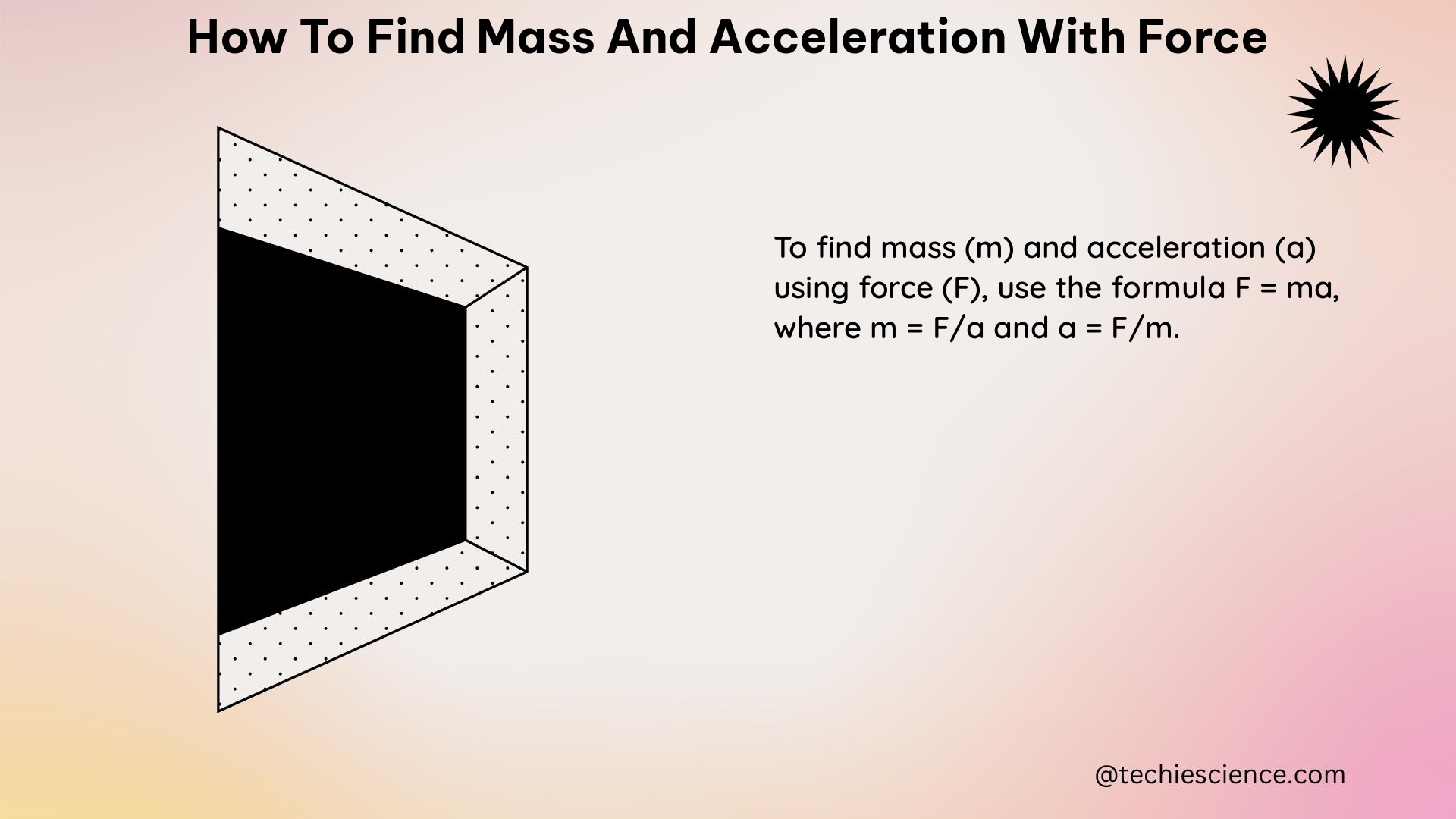In the realm of classical mechanics, understanding the relationship between force, mass, and acceleration is crucial. This comprehensive guide will delve into the intricacies of using Newton’s second law of motion to determine the mass and acceleration of an object given the applied force.
Understanding Newton’s Second Law of Motion
Newton’s second law of motion states that the acceleration of an object is directly proportional to the net force acting upon it and inversely proportional to its mass. This relationship can be expressed mathematically as:
F = m × a
where:
– F is the net force acting on the object (in newtons, N)
– m is the mass of the object (in kilograms, kg)
– a is the acceleration of the object (in meters per second squared, m/s²)
This fundamental equation forms the basis for determining the mass and acceleration of an object given the applied force.
Calculating Mass from Force and Acceleration

To find the mass of an object, we can rearrange the formula to solve for m:
m = F / a
This means that if you know the force acting on an object and its resulting acceleration, you can calculate the mass of the object by dividing the force by the acceleration.
For example, if a force of 10 N is applied to an object and it accelerates at a rate of 5 m/s², the mass of the object can be calculated as:
m = F / a
= 10 N / 5 m/s²
= 2 kg
Therefore, the mass of the object is 2 kg.
Calculating Acceleration from Force and Mass
Alternatively, if you know the force acting on an object and its mass, you can calculate the acceleration using the rearranged formula:
a = F / m
This means that if you know the force acting on an object and its mass, you can calculate the acceleration by dividing the force by the mass.
For example, if a force of 20 N is applied to an object with a mass of 10 kg, the acceleration can be calculated as:
a = F / m
= 20 N / 10 kg
= 2 m/s²
Therefore, the acceleration of the object is 2 m/s².
Practical Applications and Examples
The ability to determine mass and acceleration from force is essential in various fields, such as:
-
Automotive Engineering: Calculating the force required to accelerate a vehicle with a known mass can help in the design and optimization of vehicle propulsion systems.
-
Robotics and Automation: Determining the mass and acceleration of robotic components is crucial for precise control and efficient operation.
-
Sports Science: Analyzing the forces and accelerations involved in athletic activities can provide insights into performance optimization and injury prevention.
-
Aerospace Engineering: Calculating the mass and acceleration of spacecraft and their components is vital for successful launch, orbital maneuvers, and landing operations.
Here’s an example problem to illustrate the application of these concepts:
Problem: A car with a mass of 1500 kg is accelerating at a rate of 3 m/s². What is the force acting on the car?
Solution:
To find the force, we can use the formula:
F = m × a
Substituting the given values:
F = 1500 kg × 3 m/s²
F = 4500 N
Therefore, the force acting on the car is 4500 N.
Advanced Considerations
While the basic principles outlined above provide a solid foundation for understanding the relationship between force, mass, and acceleration, there are some advanced considerations to keep in mind:
-
Coordinate Systems: When dealing with complex systems or multi-dimensional motion, it is essential to define the appropriate coordinate system and apply the force, mass, and acceleration vectors accordingly.
-
Friction and Other Forces: In real-world scenarios, there may be additional forces, such as friction or air resistance, that need to be accounted for in the analysis.
-
Rotational Motion: For objects undergoing rotational motion, the concepts of torque, angular acceleration, and moment of inertia must be considered.
-
Relativity and Quantum Mechanics: At extremely high speeds or small scales, the principles of classical mechanics may need to be supplemented with the theories of special and general relativity, as well as quantum mechanics.
Conclusion
Mastering the ability to find mass and acceleration from force is a fundamental skill in classical mechanics. By understanding and applying Newton’s second law of motion, you can solve a wide range of problems in various fields of science and engineering. This comprehensive guide has provided you with the necessary tools and examples to confidently tackle these types of calculations.
Reference:
- Calculating Acceleration from Force and Mass – CK-12 Foundation
- Newton’s Second Law of Motion: Concept of a System – Lumen Learning
- Newton’s Second Law of Motion: Concept of a System – Texas Gateway

The lambdageeks.com Core SME Team is a group of experienced subject matter experts from diverse scientific and technical fields including Physics, Chemistry, Technology,Electronics & Electrical Engineering, Automotive, Mechanical Engineering. Our team collaborates to create high-quality, well-researched articles on a wide range of science and technology topics for the lambdageeks.com website.
All Our Senior SME are having more than 7 Years of experience in the respective fields . They are either Working Industry Professionals or assocaited With different Universities. Refer Our Authors Page to get to know About our Core SMEs.